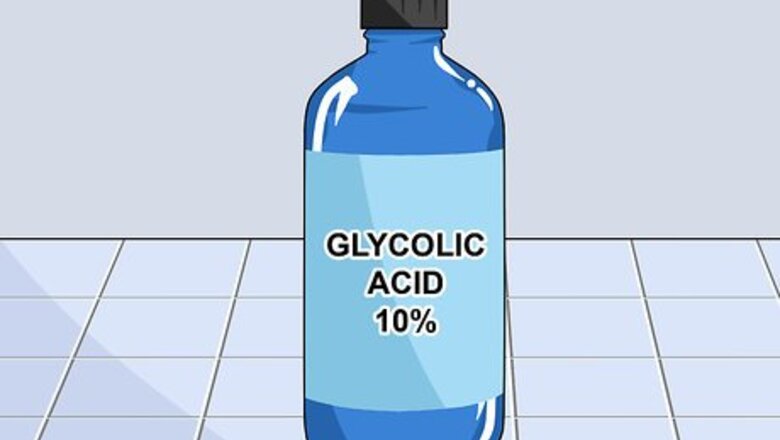
views
X
Trustworthy Source
PubMed Central
Journal archive from the U.S. National Institutes of Health
Go to source
Using Glycolic Acid at Home
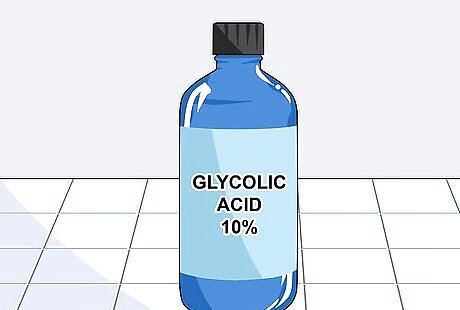
Start with a glycolic acid product with 10% concentration or less. Solutions with higher than 20% are not advised for home use, and it’s best to start off with a mild concentration for your first time to see how your skin reacts. The product’s concentration should be listed on its label.
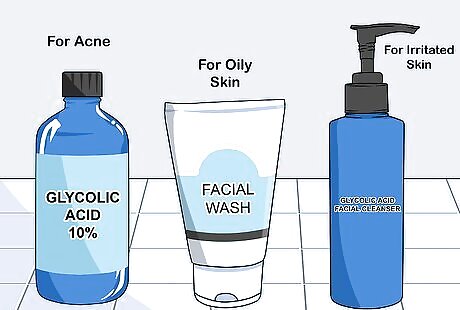
Use a product designed for what you want to treat. Glycolic acid can be helpful for a variety of skin issues, including ingrown hairs, aging, and acne. You’ll get the best results if you look for a product that is tailored to your needs.
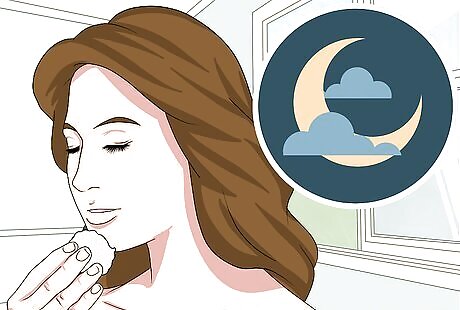
Use the glycolic acid in the evening if possible. Applying the acid in the evening will give your skin time to recover overnight. If you can't do it in the evening, make sure you wear a light-weight moisturizer with sunscreen in it if you're going to be outside at all.
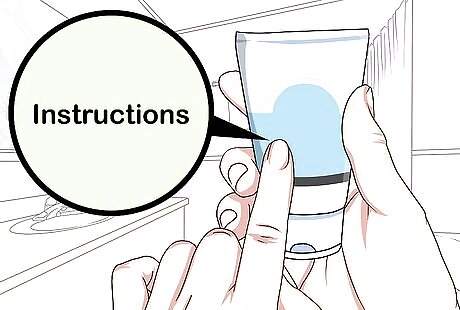
Read any instructions carefully before starting. While the procedure for applying glycolic acid peels shouldn’t vary too much from one to the next, you should still read the instructions that come with your product thoroughly. Read them before you begin the process so you can be completely prepared.
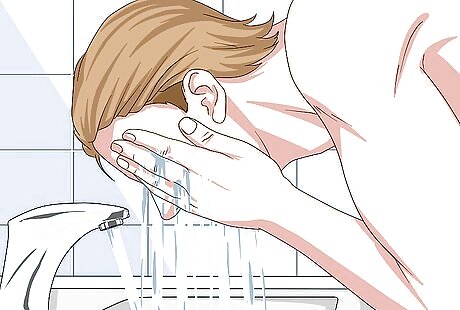
Make sure your face is clean and not greasy. Wash your face with a mild cleanser to get rid of any grease, oils or dead skin. If you have any open cuts or cold sores on your face, you should put the treatment off until these are healed.

Apply a little petroleum jelly around your eyes, mouth and nostrils. This will help keep the glycolic acid solution from getting to the more sensitive parts of your face. Be careful not to get petroleum jelly in your eyes when applying.
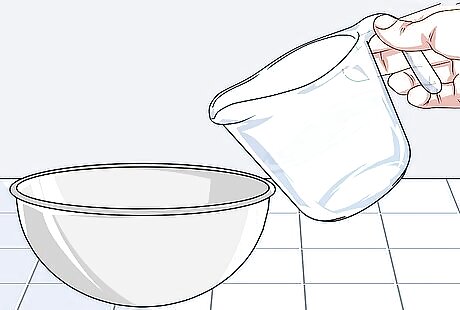
Fill a bowl with water for neutralizing the glycolic acid when you’re done. You can also make the water into a basic solution by adding ammonium salts, sodium bicarbonate (baking soda), or sodium hydroxide.
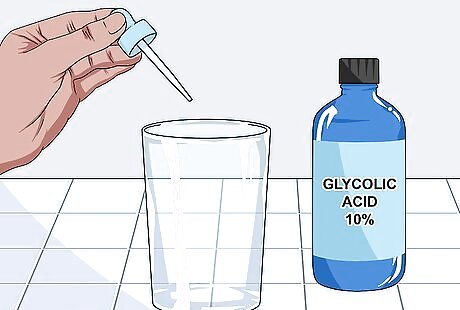
Pour some glycolic acid solution into a glass cup to check for crystals. Occasionally small crystals will form in the glycolic acid solution, and you want to avoid applying these to your skin, since they are more concentrated. Pouring the solution into a glass first will help you see and avoid any crystals that might be present.

Apply the glycolic acid solution with a cotton swab or brush. Make sure you aren’t getting too much solution on the swab or brush so that it doesn’t drip. Apply the solution gently and as evenly as possible, working from the forehead to the left cheek to the chin to the right cheek. Avoid your eyes, the corners of your nose, and your lips. If the glycolic acid solution does enter your eyes, flood the affected eye with regular saline solution.

Wait 3-5 minutes or until the treated area turns red. Watch your skin in the mirror after applying the solution. After about 3 minutes, the treated skin should be a fairly uniform reddish color. However, if the skin seems to be consistently red before 3 minutes, or you’re experiencing a lot of pain or stinging, you can apply the neutralizing solution sooner. Set up a fan so it's blowing in your face to help alleviate any itching or burning.

Rinse the treated area with water or a neutralizing solution. Using a cotton ball or soft cloth, gently dab your face with the water or basic solution you set aside earlier for neutralizing. Be careful not to let the solution run, as it may run into your eyes, nose or mouth. Neutralize the treated skin thoroughly, using several cotton balls or cloths if necessary.
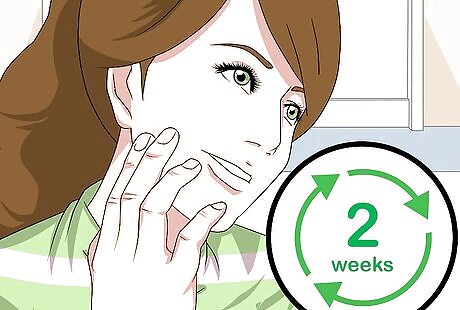
Repeat every 2 weeks for 4-6 months. After 4-6 months, you should start to see changes in your skin. If you're not getting the results you hoped for, you may want to reach out to a professional dermatologist to get a stronger glycolic acid peel.
Getting a Professional Treatment
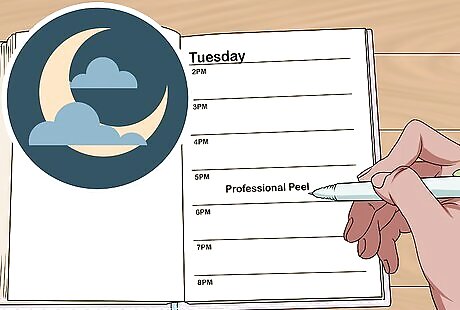
Schedule your professional peel for the evening or late afternoon. Treated skin will be very sensitive to the sun afterwards, so it’s best to plan your peel for when you can easily avoid the sun for several hours.
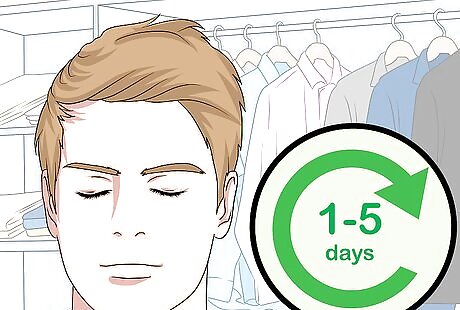
Plan on taking at least 1-5 days for your skin to fully heal. It’s unlikely that you’ll experience much pain after your peel, but your skin will still be very sensitive. You may also notice some redness or discoloration while your skin heals. Make sure you don’t have any important events coming up directly after your treatment.

Consult your dermatologist to see if glycolic acid is right for you. Glycolic acid is not ideal for everyone, including pregnant or nursing women, people with very dark skin, and anyone with a history of cold sores. Ask your doctor how long the treatment will take, what the recovery process will be like, and what the possible side effects are. Be sure to give your doctor a complete list of medications you’ve taken in the past 6 months. Some medications, like Amnesteem or Accutane, should not be taken within 6 months of using glycolic acid.

Try a glycolic acid lotion to see how it affects your skin. If your dermatologist approves, you may want to start off by using a glycolic acid lotion, which will contain small amounts of glycolic acid, for a few weeks. This will make the results of your peel more even, and it will show whether your skin is sensitive to glycolic acid. Glycolic acid lotions and creams can be found in specialty makeup shops like Ulta Beauty, and may even be available at your local department store in the skin care section. Follow the product’s instruction label for proper use.
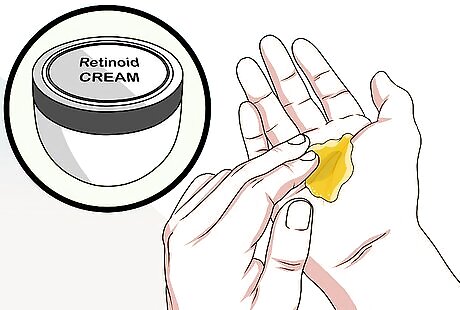
Start using retinoid cream 2-4 weeks before your treatment. Your dermatologist may recommend using products that contain retinoids or hydroquinone for a few weeks leading up to the peel, which will help protect your skin from temporary darkening after the treatment. You should apply these as directed by your dermatologist or pharmacist. Only use these products if your dermatologist recommends them. Improper use may cause complications when you get your glycolic acid peel.

Stop using any skin products 3-5 days before your treatment. Avoid using any creams, scrubs, lotions, or exfoliators at least 3 days before you apply glycolic acid, including retinoid or hydroquinone creams if you’re using them. You should also avoid microdermabrasion, depilatory creams, waxing, or laser hair removal -- basically, the only thing you want to use on your skin for these last few days is soap and water.
Caring for Treated Skin during Healing
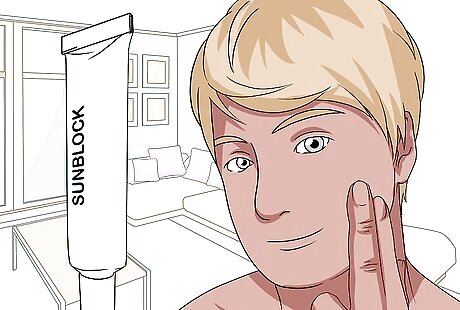
Protect treated areas from the sun. After being treated with glycolic acid, your skin will be very sensitive as it renews its outer layer. While it heals, keep your face out of direct sunlight as much as possible, and use a broad-spectrum sunscreen every day whether you’ll be in the sun or not.
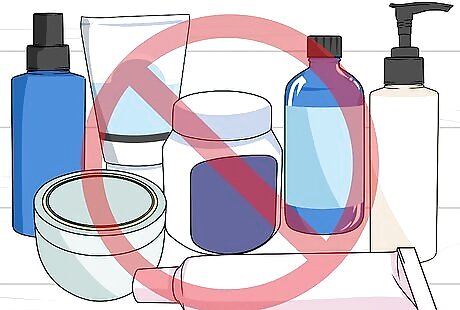
Don’t use any harsh cleansers or exfoliants. When washing your face, avoid any strong cleansers or harsh soaps. Consider using a non-soap cleanser like cleansing oil or soap with a pH of less than 7. You should also steer clear of any exfoliants or scrubs, which can damage your healing skin.

Eat a well-balanced diet and drink plenty of water. Eating a healthy diet and staying hydrated will encourage your skin to heal faster after your peel. It will also give your skin a healthy glow.
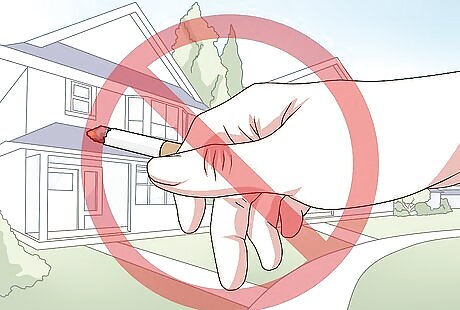
Refrain from smoking. If you are a smoker, do your best to cut back or stop altogether for a couple weeks after your treatment. This will help your skin heal faster.
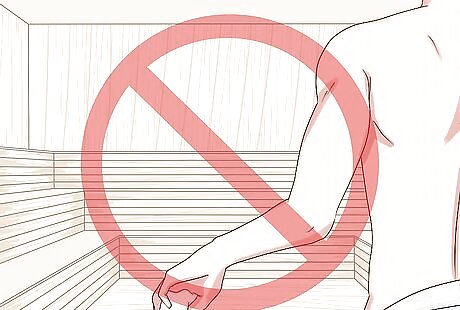
Avoid steam and saunas. Hot steam may irritate your skin while it heals. You should refrain from using saunas or hot tubs, or taking especially long showers or baths.
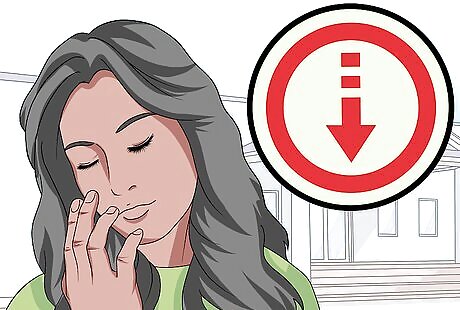
Touch treated areas as little as possible. As with any sort of healing, you will heal much faster and reduce the risk of infection if you refrain from picking, peeling or touching your treated skin.




















Comments
0 comment